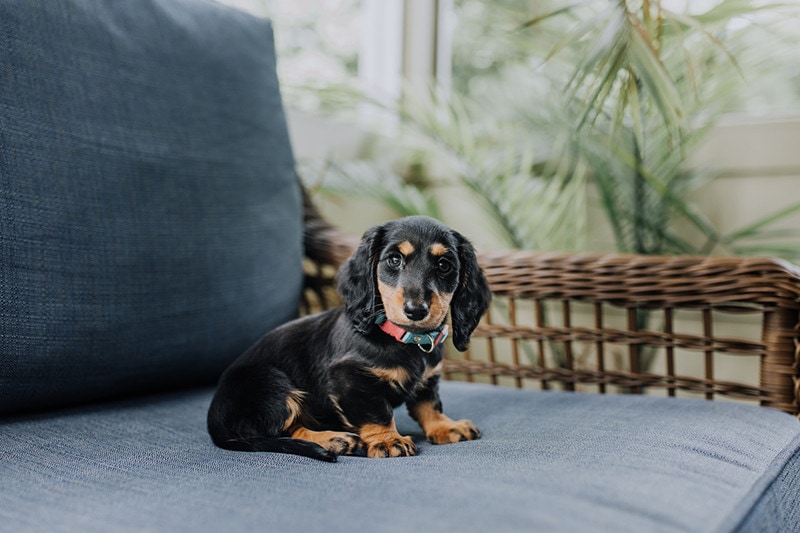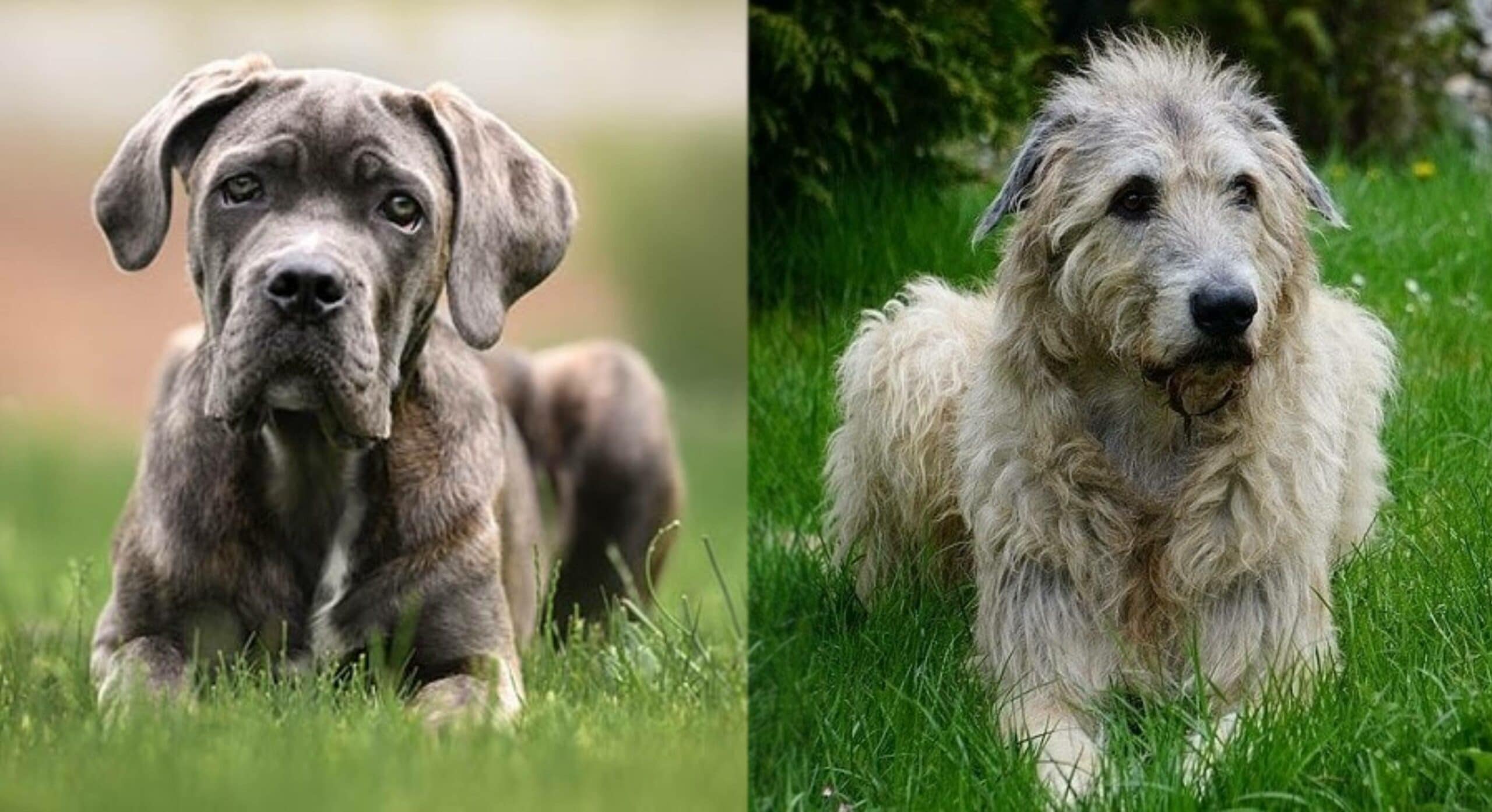Teacup Dachshund: Pictures, Guide, Info & More
By Brooke Bundy
Updated on

Click to Skip Ahead
Tiny dogs carry the same appeal as tiny homes. They’re cute and easier to maintain than what’s on the mainstream market. Unfortunately for dogs, however, tiny canines can also possess certain health problems that can cause a diminished quality of life and higher vet bills in the long run.
Officially, there’s no such thing as a teacup Dachshund. They’re essentially smaller miniature Dachshunds that breeders have marketed as a teacup—usually for a higher price, too. We’ll talk about the origins of the Dachshund breed as a whole and discuss why the designer teacup varieties that are so popular today might not be the most healthy choice.
The Earliest Records of the Teacup Dachshund in History
The Dachshund was developed in Germany by selectively breeding small hounds to target ideal hunting traits. These breeders required a low-profile dog who could slide into small burrows to flush out badgers and crawl backwards out of the holes with ease. This dog needed a deep chest cavity to hold a large amount of air, since they would be underground with little oxygen for long periods of time. The standard Dachshund resulted from these 17th century breeding techniques. This typical “badger hound” weighed between 16 and 32 pounds.
Over time, the needs of the hunters changed. The rabbit population surged in the 1800s, and again, the Dachshund was called to fix the problem. Breeders selectively bred their Dachshunds to be even smaller to accommodate for the smaller prey, and the predecessor for the miniature Dachshund was set. The teacup Dachshund can be derived from smaller miniature Dachshunds, which we’ll delve into momentarily.

How the Teacup Dachshund Gained Popularity
During the late 20th century, “designer” dogs became all the rage. Some of these pets were bred by combining two existing breeds to make a new breed, such as mating a Cocker Spaniel with a Poodle to create a Cockapoo, while others took existing dog breeds and made them smaller, such as the teacup Dachshund.
We don’t know exactly what catalyzed the designer dog movement, but our guess is that the mixed breed dogs were more hypoallergenic since they typically involved the Poodle, which was better for people with mild allergies, and the smaller dogs fit in better with housing trends of smaller homes in bigger cities. While you probably can’t take your lumbering Labrador into HomeGoods, you can easily sit your Cockapoo or teacup Dachshund into the shopping cart and take them browsing with you.
The teacup Dachshund fit in with the designer dog trend because it was a more compact version of a breed that people already adored.
Formal Recognition of The Teacup Dachshund
Unlike the first two types of Dachshunds, which were developed to accommodate hunting, the teacup Dachshund was created merely for style. In fact, the AKC doesn’t recognize the teacup Dachshund as a separate category at all, which means there isn’t a strict breed standard. In general, a teacup Dachshund is under 8 lbs., and can be achieved through a couple of different methods.
The first method unfortunately is very unethical. Sometimes breeders can achieve a smaller sized animal by restricting their milk supply, which is crippling to their development. Another way breeders might receive a smaller animal is by breeding the runts of two litters. This is obviously a more ethical choice but can still have health concerns.
Although every litter has a runt because dogs aren’t born exactly the same size, runts can become sickly since their petite size restricts their ability to compete with their stronger siblings for milk supply. Essentially, both methods of creating teacup types involve directly or indirectly cutting out calories, which is harmful to a growing puppy.

Top 3 Unique Facts About the Teacup Dachshund
1. Welcomed by the Queen
Queen Victoria warmly welcomed Dachshunds into her royal home during the 19th century. These were likely standard-sized Dachshunds, but we can imagine the Queen would’ve loved the idea of a teacup Dachshund even more. The royal approval helped the Dachshund gain popularity throughout England and the United States.
2. Persecution
Dachshunds were persecuted in the early 20th century. Unfortunately, as global events turned into World War I and World War II, the approval of late Queen Victoria no longer sheltered these hounds from harm. Anti-German sentiments spiked in the U.S., and unfortunately some of these dogs were killed in the streets. Others called them “liberty hounds” in order to spare them by giving them a patriotic identity.
3. Germany officially recognizes three sizes of Dachshunds.
While the American Kennel Club only lists standard and miniature as acceptable breeding standards, Germans have a third. The Kaninchen is in between the size of a standard and miniature. It means “rabbit,” which hearkens back to its hunting days. Neither Germany nor the U.S. recognize the teacup size.

Does the Teacup Dachshund Make a Good Pet?
If you have your heart set on a teacup Dachshund, you should know that most breeders will probably charge you more for this size than any other due to its “designer” status. If possible, you should try to rescue one instead. This website lists breed-specific Dachshund rescues all across the U.S., but you could always try your local animal shelter first.
As with any Dachshund, the teacup Dachshund needs considerable exercise despite its small size. Remember, its recent ancestors were trained and bred to hunt, so your little badger hound will likely want to run and bark after small prey in your backyard.
Every dog needs exercise and a balanced diet to stay healthy, but it’s especially important for the teacup Dachshund because it’s smaller-than-usual limbs won’t support obesity. Other health concerns common in Dachshunds such as Intervertebral Disk Disease are greater risks in smaller Dachshunds because their bodies won’t tolerate jumping or falling as well as their bigger counterparts.
Conclusion
Although it doesn’t have an officially recognized breed standard, some people prefer the teacup Dachshund for its smaller size while still maintaining the Dachshund’s personality. Some teacup sized dogs are produced through unethical methods, so make sure you buy from a reputable breeder if you decide to purchase instead of rescue.
- See also: Cream Long Haired Dachshund
Featured Image Credit: Carissa Weiser, Unsplash











